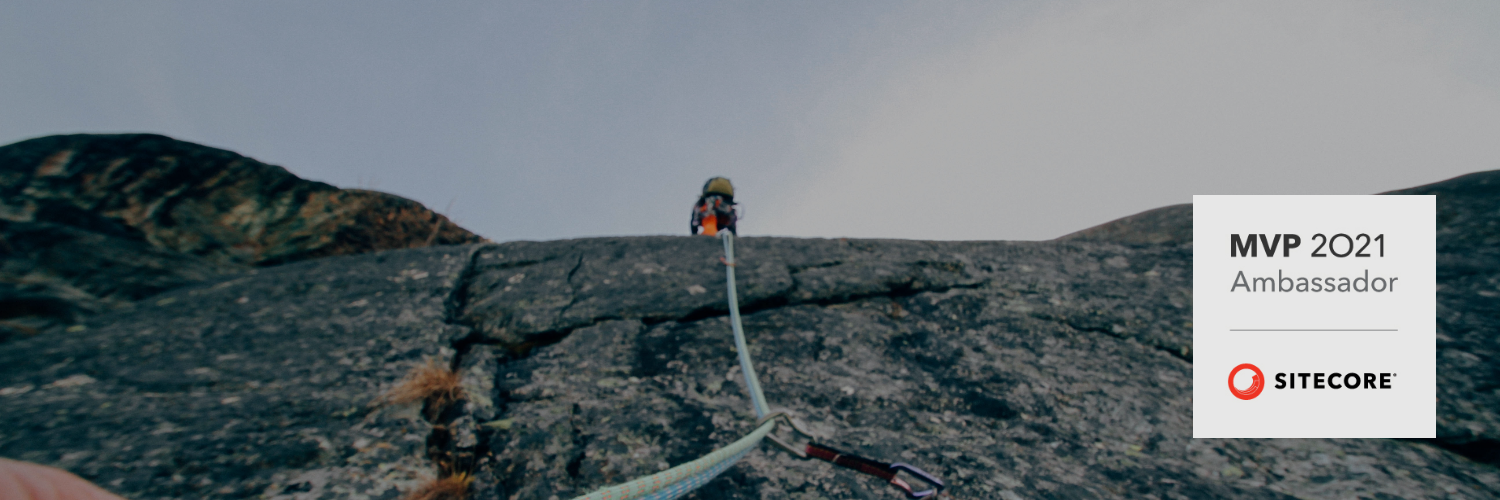What we cover in this article:
- What this is: A practical reference architecture for adopting headless CMS—covering the front end, BEFE, Experience APIs, and Integration & Data APIs.
- Who it’s for: Digital leaders, architects and delivery teams making choices about CMS tier, API maturity and operating models.
- The problem: Many “headless” builds only wire a CMS to a renderer. They stall when asked to scale, secure, integrate or add channels.
Enterprise Reference Architecture for Headless CMS Adoption
Whether you are moving from a traditional all-in-one DXP to a basic headless setup, transitioning to a fully composable headless solution based on MACH principles, or starting from scratch, the benefits of a modern headless approach depend heavily on getting the architecture right.
All too often, we see implementations fall into the trap of focusing only on the immediate deliverable or buying into commercial narratives that present an overly simplified view of headless. These narratives often make it sound like success is just a matter of adding a CMS and a rendering host, without addressing the architecture required to deliver a scalable, secure, and fully functional solution. Critical elements such as backend-for-frontend APIs, experience APIs, integration APIs, DevOps pipelines, security frameworks, and operational monitoring are rarely given the attention they deserve. Without a clear plan for how these layers will be implemented, organisations risk moving quickly at first but finding themselves stuck when they need to scale, integrate with core systems, or extend into additional channels.
To simplify headless, let’s start by considering the beginning point of most headless journeys: the website(s). Even if we focus first on this channel and basic content, choosing established patterns lets us realise the full benefits of headless over time. Implementing a full reference architecture or going all in on composable is not for every business, but for many that choose enterprise-class CMS platforms it provides early agility and long-term readiness.
Keep the end state in mind: an API-first headless platform that supports multi-channel delivery and agility. If we start with the website on that basis we will not paint ourselves into a box. The website may begin simple, but the target should support multi-site and potentially multi-language authoring and governance, personalisation, search and integrated transactional experiences, and be designed for security, observability and scale so we can add channels and deeper integrations without rework or replatforming.
There are many types of headless websites. From an architectural requirements perspective, they fall into the following categories:
- Static brochureware: Slow-changing, static content.
Example: A small business website with fixed service descriptions and contact details. - Content-led brochureware: A mix of slow-changing evergreen pages and regularly published articles, with no interactivity.
Example: A professional services company site featuring detailed pages about products and services alongside a library of thought-leadership articles. - Minimally interactive sites: Limited interactivity such as enquiry forms, registration links, and complaint submissions, combined with informational content.
Example: A public sector website providing information on government services with options to submit enquiries, register for programs, or file complaints. - Enterprise content-led: Uses an enterprise-class CMS for governance, compliance and scale (multi-site, multi-language), with limited interactivity and some API integrations for content and basic services rather than full transactional flows.
Example: A global corporate website with strict brand governance and multi-region publishing workflows. - Extensively interactive sites: Authenticated experiences where users access personalised data or complete transactions, combined with publicly available product information, product disclosure statements, and supporting content such as articles and industry news.
Example: An insurance business platform allowing customers to log in, submit online claims, obtain quotes in real time, and access related product documentation and news. - Line-of-business applications: Purpose-built applications that do not follow CMS patterns, where most processing occurs on the server.
Example: An inventory management tool integrated with ERP systems.
Enterprise-class CMS platforms are rarely chosen for static brochureware (category 1) and only occasionally for content-led brochureware (category 2). They are most often selected to support enterprise content-led (category 4) and extensively interactive sites (category 5), where governance, performance and secure integrations demand a robust architecture. Minimally interactive sites (category 3) can be served by mid-tier or enterprise platforms depending on security and integration scope. Line-of-business applications (category 6) usually emphasise API maturity over CMS capability and often sit largely outside the CMS, although they are often considered part of the digital experience and, if done well, share many of the same underlying experience APIs and integration and data services.
For more information on headless CMS platform alignment please visit review the Dataweavers Blog on “Headless CMS Platform Selection”.
The Reference Architecture
The diagram below shows the standard reference architecture used to deliver headless at enterprise scale. It separates Digital Experience Composition (rendering host, BEFE and Experience APIs) from Integration and Orchestration (Integration & Data APIs and supporting stores), all fronted by CDN and WAF. This keeps the front-end lean, centralises journey logic, shields systems of record behind caches and connectors, and enables in-tenant security, CI/CD and observability.
Digital Experience Composition
Digital Experience Composition comprises three areas. The first is the end-user experience: for the website, this is the front-end user interface. Front ends that connect to modern headless CMS platforms are often built with JavaScript frameworks such as Next.js or Nuxt.js. They use static site generation, with incremental static regeneration or server-side rendering where needed, to deliver high performance.
The backend-for-frontend (BEFE) shapes channel-ready responses. It applies experience rules, normalises and enriches content, and composes data from multiple sources. In many builds the CMS and front end talk directly for basic content; the BEFE then focuses on logic that spans services and on aggregation beyond the CMS. It integrates with upstream systems through the Experience layer, which in turn uses Integration and Data APIs. This keeps the front-end lean, separates concerns, and avoids rework as channels grow.
The Experience APIs encapsulate business logic for a specific journey, for example managing a policy, an account, a claim or a checkout. They act as domain services that own validation, authorisation, orchestration and transaction boundaries for that journey. They expose channel-agnostic models and hide system details. They interact with downstream systems directly or through the Integration and Orchestration APIs.
In smaller implementations the BEFE and Experience APIs are often combined. This can work early, but it tends to recreate the same logic across channels as soon as you move beyond the website. Keep the BEFE thin and presentation-focused, and keep Experience logic in its own APIs so it can be reused across web, mobile and other channels.
Orchestration and Integration
This tier retrieves and posts data to downstream platforms. It covers digital channel services such as search, personalisation and the CMS, and more importantly the integrations with line-of-business systems including CRM, ERP and transactional platforms.
Integration and Orchestration Data APIs encapsulate the logic for connecting to systems of record. They often include their own data stores for reference and in-flight transactions. Caching reference data and incomplete records is essential to protect the Digital Experience Composition from downstream throttling and performance constraints.
In many enterprises, Enterprise Application Integration (EAI) middleware provides the physical connectivity to platforms, especially legacy. These tools act as last-mile connectors and may embed system-specific rules. The Integration and Orchestration Data APIs can call modern services directly over standard protocols while also using Enterprise Application Integration technology, such as an ESB, for legacy connections.
Mapping Needs to Architecture
Referring to the earlier site categories, and with the reference architecture defined, it makes sense to consider which types of sites need to implement which architectural features at a minimum.
A best-practice enterprise architecture is layered to deliver a wide range of outcomes, but not every implementation needs every layer on day one. Decisions should be driven by the site’s functional and technical requirements, and by potential use of other channels in the future and the API maturity those channels will require. Designing with those future needs in mind helps avoid rework and ensures the architecture can scale when needed.
The graph below plots each category along two dimensions: CMS capability requirements and API maturity needs. It shows how these differ by complexity today and by the potential to expand into other channels over time.
How the categories align
Category 1 Static brochureware
Sits firmly in the bottom-left of the graph. Can be delivered with a basic CMS or even a completely static site, with no distinct API tier required. Moving to a headless architecture or even adopting a CMS at all will only make sense if there are other compelling drivers, such as the need for a unified editorial workflow, centralised brand governance, or a planned expansion into additional channels.
Category 2 Content-led brochureware
Requires a backend-for-frontend API to serve content efficiently for the website channel, but does not need full integration with business systems. Typically uses a headless CMS alongside supporting services such as a media DAM and search. This category can work with a basic headless CMS, but may justify a move to a mid-tier solution if enterprise requirements such as multi-site management, multi-language support, or enhanced authoring experiences are important.
Category 3 Minimally interactive sites
Requires BEFE APIs for channel-specific presentation and domain-based experience APIs to handle form submissions and simple transactional interactions. These interactions may span multiple digital channels and, in some cases, require secure integrations or personalised experiences. This category often sits between mid-tier and enterprise headless CMS solutions. A mid-tier platform may be suitable if integrations are light and security needs are moderate, while an enterprise platform is advisable for high-assurance environments or when multiple channels and complex integrations are in scope.
Category 4 Enterprise content-led
Uses an enterprise headless CMS for governance, multi-site and/or multi-language with limited interactivity. Requires a backend-for-frontend to shape content for the web channel, plus light API integrations for DAM, search, analytics and occasional read-only feeds from line-of-business systems. An integration and data API tier is optional and usually limited because real-time transactions are not in scope.
Category 5 Extensively interactive sites
Aligns with the full reference architecture, including BEFE APIs, experience APIs, and integration/data APIs for secure transactions, real-time data, and personalised user experiences. This is where an enterprise headless CMS combined with the complete architectural implementation is almost always the right choice.
By visualising the categories in this way, it becomes easier to see the natural progression from simple static content delivery to rich, integrated digital experiences. It also highlights why many organisations that select an enterprise-class CMS do so to support categories 3, 4 and 5, where scalability, security, and integration maturity are essential.
The following visual expands on this and outlines which API layers because of the type of website being built are required:
Conclusion
Headless succeeds when the architecture is intentional. Start with the website, choose the minimum layers your category needs, and keep the options open for what comes next. Define clear boundaries for BEFE and Experience APIs, stabilise integrations behind Integration and Data APIs, and invest early in security, CI/CD, caching and observability. That way you can add channels, deepen integrations and scale without rework.
Practical next steps
- Identify your current category and where you want to move next.
- Map the minimum architectural layers needed now, and note what can wait.
- Set guardrails: deployment automation, performance budgets, logging and monitoring.
- Deliver a thin vertical slice that proves the pattern end to end.
Ready to simplify your headless journey?
Don’t wait until your stack gets overwhelming. Download the Headless CMS Architecture Map today and get a clear, step-by-step guide to building only what you need on day one... without over-investing too early.






